by Jon LeSage, editor and publisher, Green Auto Market
Here’s my take on the 10 most significant and interesting occurrences during the past week…….
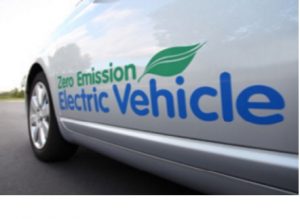 ZEV credits: The California Air Resources Board may plan this week for the state’s emissions targets to remain largely unchanged through 2025 and then jump after that year, according to three people familiar with the proceedings. This will disappoint Tesla CEO Elon Musk and environmental groups that have called for expansion of the zero emission vehicle incentives. Tesla sold 80,227 credits during the 11 months through August, which accounted for 86% of the total. And even at prices below what Musk wants, the sales helped Tesla report a profit in the third quarter after having sold $139 million worth of ZEV credits during that quarter. CARB is reassessing its targets as part of the so-called mid-term review of President Barack Obama’s fuel-economy and emissions goals for 2025.
ZEV credits: The California Air Resources Board may plan this week for the state’s emissions targets to remain largely unchanged through 2025 and then jump after that year, according to three people familiar with the proceedings. This will disappoint Tesla CEO Elon Musk and environmental groups that have called for expansion of the zero emission vehicle incentives. Tesla sold 80,227 credits during the 11 months through August, which accounted for 86% of the total. And even at prices below what Musk wants, the sales helped Tesla report a profit in the third quarter after having sold $139 million worth of ZEV credits during that quarter. CARB is reassessing its targets as part of the so-called mid-term review of President Barack Obama’s fuel-economy and emissions goals for 2025.- Longest range ever: Henrik Fisker is striving to earn the bragging rights on plug-in electric vehicle performance. The head of the Fisker Inc. startup on Monday claimed that the all-electric luxury sedan to be released next year, called EMotion, will be able to travel 400 miles on a single charge, reach a top speed of 161 mph, and it will come equipped with hardware allowing for fully autonomous driving. The company said it will announce its self-driving car technology supplier “soon” without providing further details.
- Renewable diesel: San Diego is becoming the largest fleet in the nation to use renewable diesel, with 1,125 diesel vehicles using the clean fuel, including street sweepers, refuse packers, and firetrucks. Doing so will release 80-percent fewer emissions than traditional diesel, according to state officials. That helps the city meet its goal of cutting greenhouse-gas emissions in half by 2035 under its Climate Action Plan, which was adopted in December. The city’s fleet was at first reviewing the option of converting vehicles over from diesel to compressed natural gas, but discovered renewable diesel to be cheaper and much cleaner in reducing emissions. The city doesn’t have to invest in conversion to start using the renewable diesel.
- Bolt production: In May, General Motors had stated the all-electric Chevy Bolt would start production in October, but then pulled the document off its website and wouldn’t comment on it anymore. There’s only been a rumor shared on Twitter so far; that source said that the production line at the Orion assembly plant has officially started. It was posted by the WaterlooRegionVoltec group of Waterloo Region, Ontario, Canada.
- Tesla supporters cult members: Lutz on Ex-vice chairman of General Motors and champion of the Chevy Bolt, Bob Lutz, shared another zinger on Tesla Motors and its CEO, Elon Musk. “Tesla supporters are like members of a religious cult,” Lutz said during an interview with CNBC last week. “Just like Steve Jobs was worshiped at Apple, it’s the same way with Elon Musk … seen as a new visionary god who promises this phantasmagorical future, a utopia of profitability and volume.” Watch the video to hear more.
- Health and climate study: The health impact of air pollution has become a widely cited source for implementing emissions reductions rules for transportation. Another study has been released tracking the damage. A new report from the American Lung Association of California states that vehicles are responsible for $37 billion in health and climate costs each year. The study tracked California, Connecticut, Maine, Maryland, Massachusetts, New Jersey, New York, Oregon, Rhode Island, and Vermont—the 10 states that have zero emission vehicle sales programs.
- Wind and solar: International Energy Agency reported that renewable energy that last year marked a turning point for renewables. Led by wind and solar, renewables represented more than half the new power capacity around the world, reaching a record 153 Gigawatt (GW), 15% more than the previous year, and surpassing coal power. Renewables are also expected to be the fastest-growing source of electricity generation over the next five years, increasing market share from 23% in 2015 to 28% in 2021.
- Wheego goes autonomous: Previously known as Wheego Electric Cars, the revamped company now known as Wheego Technologies no longer manufactures electric cars. It considers itself to be an R&D company, supplying its electric drive and autonomous driving systems. After starting in 2009, the company sold about 400 units through its network of dealers, but it’s been nearly three years since any have been built. The company now is focused on developing products for autonomous vehicles that use machine learning and artificial intelligence. It has two divisions with about a dozen employees each, and was recently granted a permit to test autonomous vehicles in California.
- Chicago electric buses: Electric bus maker Proterra just won a large contract in Chicago. JLL, a leading professional services firm specializing in real estate, announced the first commercial agreement to provide commuter shuttle services via a fleet of electric buses. The service will operate between Chicago’s commuter train stations and two of the city’s tallest buildings, the Prudential Plaza and Aon Center, both of which are managed by JLL. Proterra has leased 10 Catalyst electric shuttle buses to JLL.
- Flying car ride-hailing: Uber has conducted a report on what it calls Uber Elevate, which may become the name of its division providing riders with flying car trips. Along with Otto, the self-driving trucking unit, and the Pittsburgh autonomous car rides, Uber says it wants to find a manufacturer of flying cars to partner with and build an on-demand urban aviation system. Uber is talking to flying car startup makers Aero, Joby Aviation, eHang, and Terrafugia, and others about working together; though it will be several years from now until you’ll get to book a trip on your smartphone.

 China is facing a challenge similar to the U.S. – how to get car shoppers to buy more clean vehicles and less gas guzzling pollution emitters like large SUVs. While plug-ins, or “new energy vehicles,” have taken off in sales during the past couple of years, China’s regulatory and incentive structure appears to be changing toward a broader definition of clean vehicles. Toyota and a few Chinese automakers and suppliers are asking the government to support plug-less hybrids as another way to reduce tailpipe emissions and dependence on imported oil
China is facing a challenge similar to the U.S. – how to get car shoppers to buy more clean vehicles and less gas guzzling pollution emitters like large SUVs. While plug-ins, or “new energy vehicles,” have taken off in sales during the past couple of years, China’s regulatory and incentive structure appears to be changing toward a broader definition of clean vehicles. Toyota and a few Chinese automakers and suppliers are asking the government to support plug-less hybrids as another way to reduce tailpipe emissions and dependence on imported oil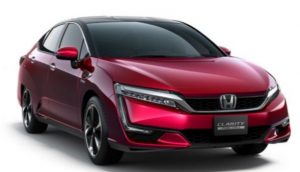 Longest range ZEV: The Honda Clarity Fuel Cell sedan, launching later this year, received a U.S. Environmental Protection Agency driving range rating of
Longest range ZEV: The Honda Clarity Fuel Cell sedan, launching later this year, received a U.S. Environmental Protection Agency driving range rating of  Take a look at
Take a look at 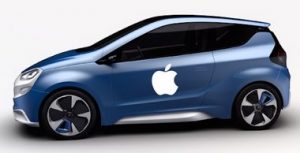 Apple backs off:
Apple backs off: 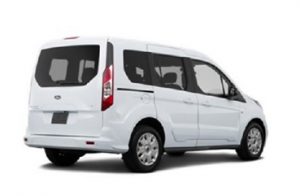 Delivery is seeing a fast-changing environment, from packages to food. Delivery vans and small, high mileage cars (especially hybrids) are passing through a paradigm shift in who owns the vehicles and how they’re being used. While the U.S. won’t be switching over to delivery bikes and three-wheelers, commonly used in crowded Asian and European cities with narrow streets, competition for leadership in delivery services is getting fierce.
Delivery is seeing a fast-changing environment, from packages to food. Delivery vans and small, high mileage cars (especially hybrids) are passing through a paradigm shift in who owns the vehicles and how they’re being used. While the U.S. won’t be switching over to delivery bikes and three-wheelers, commonly used in crowded Asian and European cities with narrow streets, competition for leadership in delivery services is getting fierce.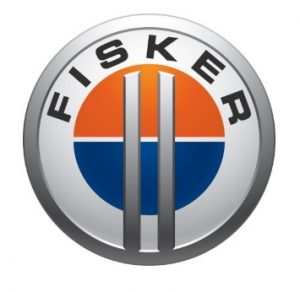 Fisker Inc.: Henrik Fisker is
Fisker Inc.: Henrik Fisker is 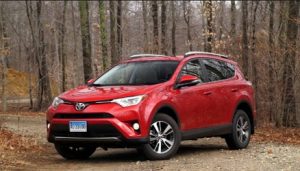 If you were to study U.S. new vehicle sales data and compare it to Plug In America’s plug-in vehicles directory, you’d see something that the two sources have in common: popularity of utility vehicles. By utility vehicles, I would include SUVs, crossovers, vans, and hatchbacks. If you take a close look at new vehicle sales in the U.S. and upcoming vehicle launches announced by automakers at the Paris Motor Show, you can get a look at the increasingly important role these vehicle categories will be playing.
If you were to study U.S. new vehicle sales data and compare it to Plug In America’s plug-in vehicles directory, you’d see something that the two sources have in common: popularity of utility vehicles. By utility vehicles, I would include SUVs, crossovers, vans, and hatchbacks. If you take a close look at new vehicle sales in the U.S. and upcoming vehicle launches announced by automakers at the Paris Motor Show, you can get a look at the increasingly important role these vehicle categories will be playing.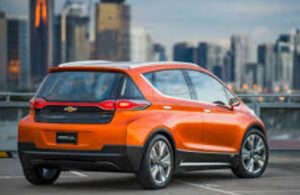 getting as much attention lately as the Nissan Leaf and Chevy Volt did during their late 2010 launches. While the range of 238 miles per charge, and its price-competitive position against the upcoming Tesla Model 3, are seen as key selling points, GM decided to invest more in a crossover SUV; as opposed to a small car like the Chevy Spark EV, which never did well in sales. The Chevrolet Sonic may have been more of a useful platform to model for the Bolt. The EPA is rating the Sonic and the Bolt as small wagons, though GM considers them differently. For some reason, the EPA has yet to adopt the crossover category.
getting as much attention lately as the Nissan Leaf and Chevy Volt did during their late 2010 launches. While the range of 238 miles per charge, and its price-competitive position against the upcoming Tesla Model 3, are seen as key selling points, GM decided to invest more in a crossover SUV; as opposed to a small car like the Chevy Spark EV, which never did well in sales. The Chevrolet Sonic may have been more of a useful platform to model for the Bolt. The EPA is rating the Sonic and the Bolt as small wagons, though GM considers them differently. For some reason, the EPA has yet to adopt the crossover category.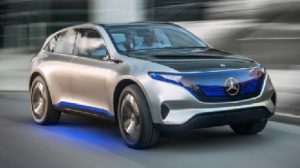 EQ concept in Paris. The EQ brand unveiling is the first step in launching 10 new battery-electric models by 2025 in Daimler’s strategy to become the global leader in electric vehicle technology; it appears to serve as a sub-brand of Daimler’s Mercedes-Benz division. Daimler said that the Generation EQ electric crossover will have a range up to 500 kilometers (311 miles), which is probably based on Europe’s NEDC standards; that will be lower in U.S. mileage range under EPA measures. The concept SUV is being moving closer to production, and is being built on an architecture developed specifically for all-electric models. That architecture is adaptable for crossovers, SUVs, sedans, coupes, and other model series, the company said.
EQ concept in Paris. The EQ brand unveiling is the first step in launching 10 new battery-electric models by 2025 in Daimler’s strategy to become the global leader in electric vehicle technology; it appears to serve as a sub-brand of Daimler’s Mercedes-Benz division. Daimler said that the Generation EQ electric crossover will have a range up to 500 kilometers (311 miles), which is probably based on Europe’s NEDC standards; that will be lower in U.S. mileage range under EPA measures. The concept SUV is being moving closer to production, and is being built on an architecture developed specifically for all-electric models. That architecture is adaptable for crossovers, SUVs, sedans, coupes, and other model series, the company said.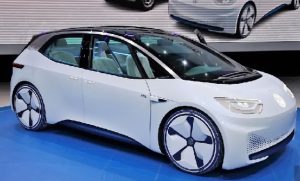 concept, called I.D., at the show. It will be the first new model built on the automaker’s MEB modular electric platform. Its battery in-flat-floor architecture is built within a futuristic exterior design with a glass roof, artistic wheel covers, digital headlamps, and sliding rear doors. It’s expected to hit production level in 2019 for purchase starting in 2020. It’s part of the automaker’s Strategy 25, where the company will be building up to one million EVs by the middle of the next decade. Last week, the automaker announced it will be expanding sales of its e-Golf nationwide in the U.S., beyond a few select states. However, VW also revealed in Paris that the I.D. will eventually replace the e-Golf (but not the Golf). Several of VW’s concept vehicles in recent years have been rolled out on SUV and crossover platforms, including the Budd-E concept.
concept, called I.D., at the show. It will be the first new model built on the automaker’s MEB modular electric platform. Its battery in-flat-floor architecture is built within a futuristic exterior design with a glass roof, artistic wheel covers, digital headlamps, and sliding rear doors. It’s expected to hit production level in 2019 for purchase starting in 2020. It’s part of the automaker’s Strategy 25, where the company will be building up to one million EVs by the middle of the next decade. Last week, the automaker announced it will be expanding sales of its e-Golf nationwide in the U.S., beyond a few select states. However, VW also revealed in Paris that the I.D. will eventually replace the e-Golf (but not the Golf). Several of VW’s concept vehicles in recent years have been rolled out on SUV and crossover platforms, including the Budd-E concept. around the automaker’s next-generation plug-in hybrid system. The system uses three electric motors and an internal combustion engine designed specifically for hybrid applications. Mitsubishi’s Executive Vice President of Overseas Operations, Kozo Shiraji, introduced the GT-PHEV concept (which stands for Ground Tourer Plug-In Hybrid Electric Vehicle) as the “possible form for a future large SUV.” The company said that the driving range for its next plug-in vehicle promises to expand on the current Mitsubishi Outlander PHEV’s range. The Outlander PHEV is a strong selling plug-in vehicle in the European market.
around the automaker’s next-generation plug-in hybrid system. The system uses three electric motors and an internal combustion engine designed specifically for hybrid applications. Mitsubishi’s Executive Vice President of Overseas Operations, Kozo Shiraji, introduced the GT-PHEV concept (which stands for Ground Tourer Plug-In Hybrid Electric Vehicle) as the “possible form for a future large SUV.” The company said that the driving range for its next plug-in vehicle promises to expand on the current Mitsubishi Outlander PHEV’s range. The Outlander PHEV is a strong selling plug-in vehicle in the European market. report, Fiat Chrysler engineers are putting the Chrysler Pacifica plug-in hybrid through final testing and calibration checks on the streets of metro Detroit ahead of the start of production, which is scheduled for next month. It looks just like the gasoline-powered version, except for special badges and a battery charging port on the left front fender.
report, Fiat Chrysler engineers are putting the Chrysler Pacifica plug-in hybrid through final testing and calibration checks on the streets of metro Detroit ahead of the start of production, which is scheduled for next month. It looks just like the gasoline-powered version, except for special badges and a battery charging port on the left front fender.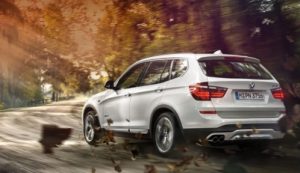 vehicle owners will buy gasoline-engine CUV and SUV versions from BMW and competitors, but so far the i3 hasn’t clicked. It has gone over well with a few EV advocates and sales have been okay. For now, BMW seems to be counting on a plug-in hybrid variant of the X3. The next-generation X3 is on its way and BMW wants to create a hybrid version as the company sees it as a more mainstream offering to the consumer. While current BMW plug-in hybrid cars (BMW X5 xDrive40e and 740e) are pricey, the X3 would give buyers another mainstream offering next to the BMW 330e, according to BMW Blog.
vehicle owners will buy gasoline-engine CUV and SUV versions from BMW and competitors, but so far the i3 hasn’t clicked. It has gone over well with a few EV advocates and sales have been okay. For now, BMW seems to be counting on a plug-in hybrid variant of the X3. The next-generation X3 is on its way and BMW wants to create a hybrid version as the company sees it as a more mainstream offering to the consumer. While current BMW plug-in hybrid cars (BMW X5 xDrive40e and 740e) are pricey, the X3 would give buyers another mainstream offering next to the BMW 330e, according to BMW Blog.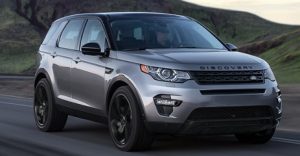 through its Range Rover and Land Rover brands. The company is first developing a new plug-in hybrid powertrain set to be offered on the Range Rover Sport. It will be based around the firm’s four-cylinder Ingenium gasoline engine, mated to the engine with an electric designed to work with the company’s existing eight-speed automatic transmission. For the second hybrid system being developed, it will be designed for the Range Rover Evoque and Land Rover Discovery Sport. It’ll utilize a three-cylinder diesel engine with an electric turbocharger and a small electric motor. Additionally, a 48-volt electrical system will provide power to the water pump and air conditioner. These models aren’t expected to debut until the end of 2018.
through its Range Rover and Land Rover brands. The company is first developing a new plug-in hybrid powertrain set to be offered on the Range Rover Sport. It will be based around the firm’s four-cylinder Ingenium gasoline engine, mated to the engine with an electric designed to work with the company’s existing eight-speed automatic transmission. For the second hybrid system being developed, it will be designed for the Range Rover Evoque and Land Rover Discovery Sport. It’ll utilize a three-cylinder diesel engine with an electric turbocharger and a small electric motor. Additionally, a 48-volt electrical system will provide power to the water pump and air conditioner. These models aren’t expected to debut until the end of 2018. internally as the C Bev, this all-electric SUV claims a 311-mile range by European standards. Audi says that it will be sized between its Q5 and a Q7 SUV models. Audi has been quite pleased by how high its sales numbers have been in the SUV segment in recent years, so an electric SUV makes a great deal of sense to the company for hitting emissions targets. Earlier this year, the company announced it will be going into production on the E-Tron Quatro by 2018. Audi said that the new model will use three electric motors and a quick charging, high‑capacity battery.
internally as the C Bev, this all-electric SUV claims a 311-mile range by European standards. Audi says that it will be sized between its Q5 and a Q7 SUV models. Audi has been quite pleased by how high its sales numbers have been in the SUV segment in recent years, so an electric SUV makes a great deal of sense to the company for hitting emissions targets. Earlier this year, the company announced it will be going into production on the E-Tron Quatro by 2018. Audi said that the new model will use three electric motors and a quick charging, high‑capacity battery.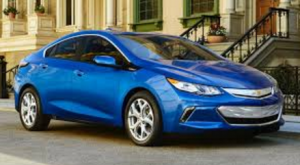 September sales: The
September sales: The  As previewed last week, the Paris Motor Show has gone through a do-over – what was once the hallmark auto show for high-performance luxury and sports supercars (with many of them powered by diesel engines) is now shifting over to electric cars as the stars of the show. Crossover utility vehicles with battery power is another trend noticed by observers.
As previewed last week, the Paris Motor Show has gone through a do-over – what was once the hallmark auto show for high-performance luxury and sports supercars (with many of them powered by diesel engines) is now shifting over to electric cars as the stars of the show. Crossover utility vehicles with battery power is another trend noticed by observers.